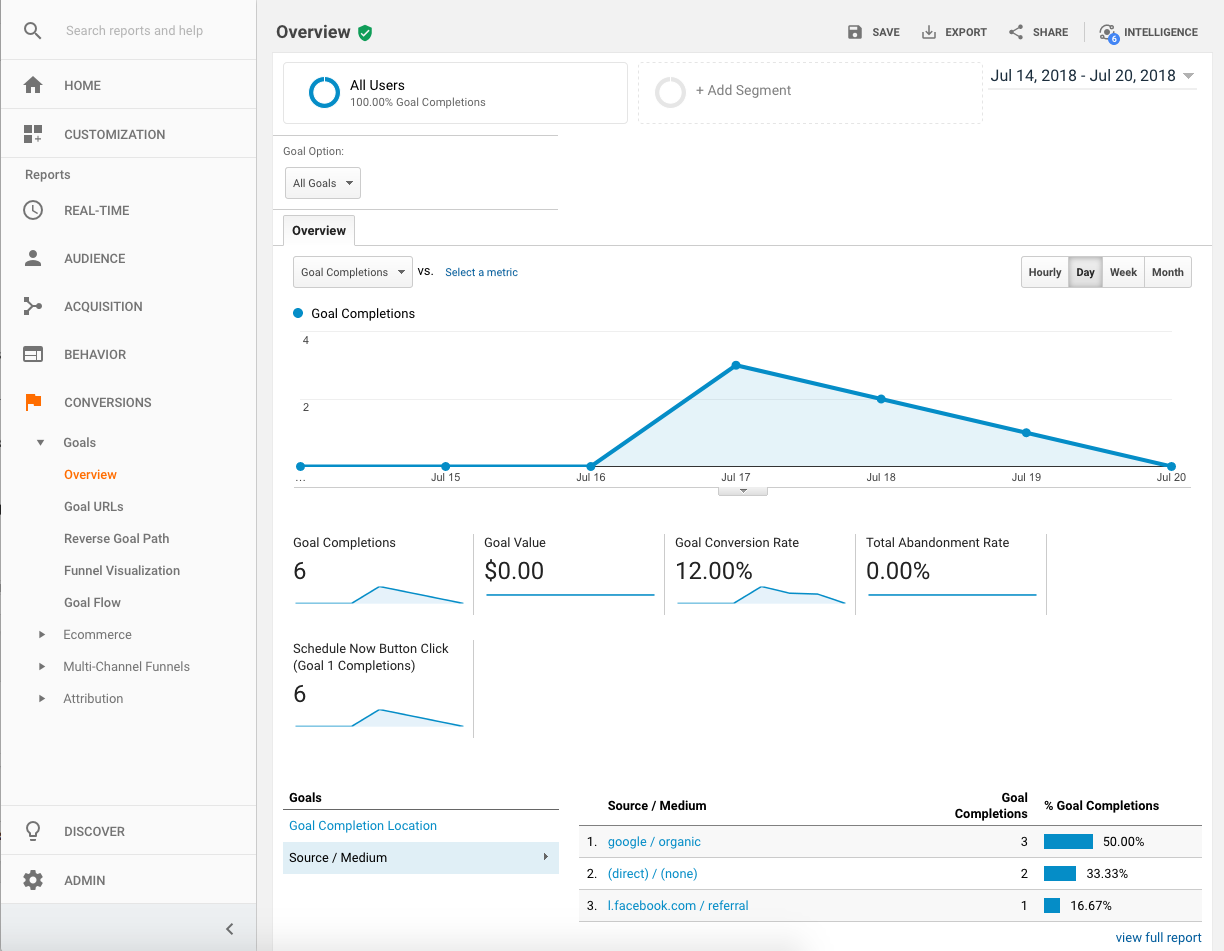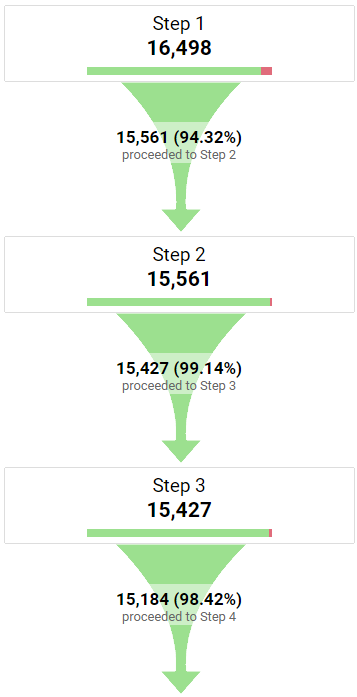Debunking Google Analytics Limitations: Discover What Information Goals Can not Track
In the realm of electronic analytics, Google Analytics stands as an effective device that gives important insights into site performance and user habits. Nevertheless, amidst its abilities, there exist limitations that often go unnoticed. Recognizing what Google Analytics can not track is critical for a comprehensive grasp of data analysis and decision-making procedures. From the ins and outs of customer interaction with dynamic web content to the intricacies of cross-device customer journeys, these restrictions shed light on locations that may continue to be obscured from traditional analytics point of views. By unraveling these restraints, a clearer picture emerges, allowing for even more enlightened strategies and improved understandings into individual engagement and conversions.

User Interaction With Dynamic Material
User communication with dynamic content plays a critical duty in understanding customer habits on websites and maximizing the overall user experience. Dynamic content refers to components on a page that can transform without the need for a full web page reload. This consists of interactive aspects such as pop-ups, sliders, kinds, and videos that react to individual actions in real-time. By tracking individual communications with dynamic content, website proprietors can obtain important understandings into customer engagement, preferences, and habits.
Google Analytics uses numerous tools to track individual interactions with dynamic web content, such as event tracking and digital pageviews. Event monitoring allows you to keep an eye on details customer actions, like clicking a button or seeing a video clip, providing information on how users engage with dynamic aspects.
Cross-Device User Journeys
Just how can modern analytics tools track the complex paths users take across several gadgets in their online trips? Cross-device user journeys present a considerable obstacle for monitoring and examining individual actions properly. As individuals communicate with applications or web sites using various devices such as desktop computers, smartphones, and tablet computers, it comes to be vital to understand exactly how they move between these platforms to optimize user experience successfully.
Google Analytics faces restrictions in tracking cross-device customer journeys because of personal privacy issues and technological constraints - what data is google analytics goals unable to track. While it can offer understandings into private devices' communications, tracking a seamless individual journey throughout several gadgets stays an obstacle. This constraint can result in incomplete information and fragmented individual insights, making it tough for businesses to produce a unified view of the customer trip
To address this problem, services can make use of sophisticated analytics devices that use cross-device tracking capabilities, permitting them to gain an extra alternative understanding of user habits. By leveraging these tools, businesses can link the gap in tracking cross-device individual trips and enhance their electronic approaches for a seamless customer experience.
Offline Conversions and Attribution
As companies browse the challenges of tracking cross-device individual trips, an additional crucial aspect to think about is the realm of offline conversions and attribution in the realm of data analytics. While Google Analytics gives important insights into on the internet individual behavior, it drops short when it pertains to tracking conversions that take place offline. This restriction presents a substantial challenge for companies that have both online and offline sales channels.
Offline conversions, such as acquisitions made in physical stores or through telephone call facilities, are vital to comprehending the complete customer journey. Without the capacity to associate these offline conversions to certain on-line interactions, services may battle to precisely measure the influence of their electronic advertising initiatives.
To resolve this gap, businesses can explore alternative remedies such as integrating CRM systems with online analytics devices or making use of distinct promo codes that can be mapped back to online campaigns. By linking the void in between online and offline data, organizations find out this here can acquire an extra extensive understanding of their customers' actions and improve their total advertising and marketing strategies.
Individual Customer Identification
In the world of data analytics, the capacity to precisely recognize individual users throughout different on-line touchpoints is a vital challenge for companies looking for to customize and enhance their marketing methods. While Google Analytics supplies useful insights into individual behavior and interactions, it drops brief in enabling the recognition of specific individuals as a result of privacy issues and technical restrictions. Google Analytics makes use of unique identifiers such as cookies to track user sessions and actions, yet these do not equate to determining specific users in a personal feeling.

Information From Secure Pages
Regardless of the increasing frequency of safe web pages on web sites, getting information from these encrypted sources offers an unique difficulty for digital analytics platforms like Google Analytics. Secure pages, shown by HTTPS in the link, encrypt data exchanged in between the user's browser and the website's web server to make sure privacy and safety. While this security is crucial for securing delicate info, it likewise postures constraints for tracking user actions and celebration analytics data.
Google Analytics deals with obstacles in collecting detailed info from safe pages because of the file encryption methods in area. Consequently, particular information factors such as referral resources, keyword searches, and also some customer communications might not be fully captured when customers access a site via a safe connection. This restriction can affect the precision and efficiency of the data analysis, leading to spaces in understanding individual habits and choices on protected web pages.
To navigate this difficulty, digital experts might need to discover alternative monitoring techniques or leverage other devices specifically made to collect understandings from protected web pages. By adapting methods to fit these restrictions, services can still acquire valuable analytics regardless of the restraints presented by encrypted connections.
Verdict
Finally, Google Analytics has restrictions in tracking individual interaction with dynamic web content, cross-device user journeys, offline conversions, private customer identification, and data from secure pages. These limitations hinder a detailed understanding of customer actions and may result in spaces in information analysis. Regardless of its valuable insights, additional hints Google Analytics may not give a straight from the source full photo of user involvement across numerous touchpoints. It is essential for companies to be familiar with these limitations and think about auxiliary tools for a more holistic view of their information.
Customer communication with vibrant web content plays an important function in recognizing individual habits on sites and maximizing the total individual experience. By tracking user communications with dynamic material, web site owners can gain beneficial insights right into customer interaction, preferences, and behaviors.
Google Analytics uses distinct identifiers such as cookies to track individual sessions and actions, however these do not relate to recognizing private customers in an individual feeling.
As a result, particular information points such as reference sources, keyword searches, and even some individual interactions might not be fully caught when customers access a site with a secure connection.In verdict, Google Analytics has constraints in tracking user communication with dynamic content, cross-device individual journeys, offline conversions, specific customer identification, and data from safe web pages.